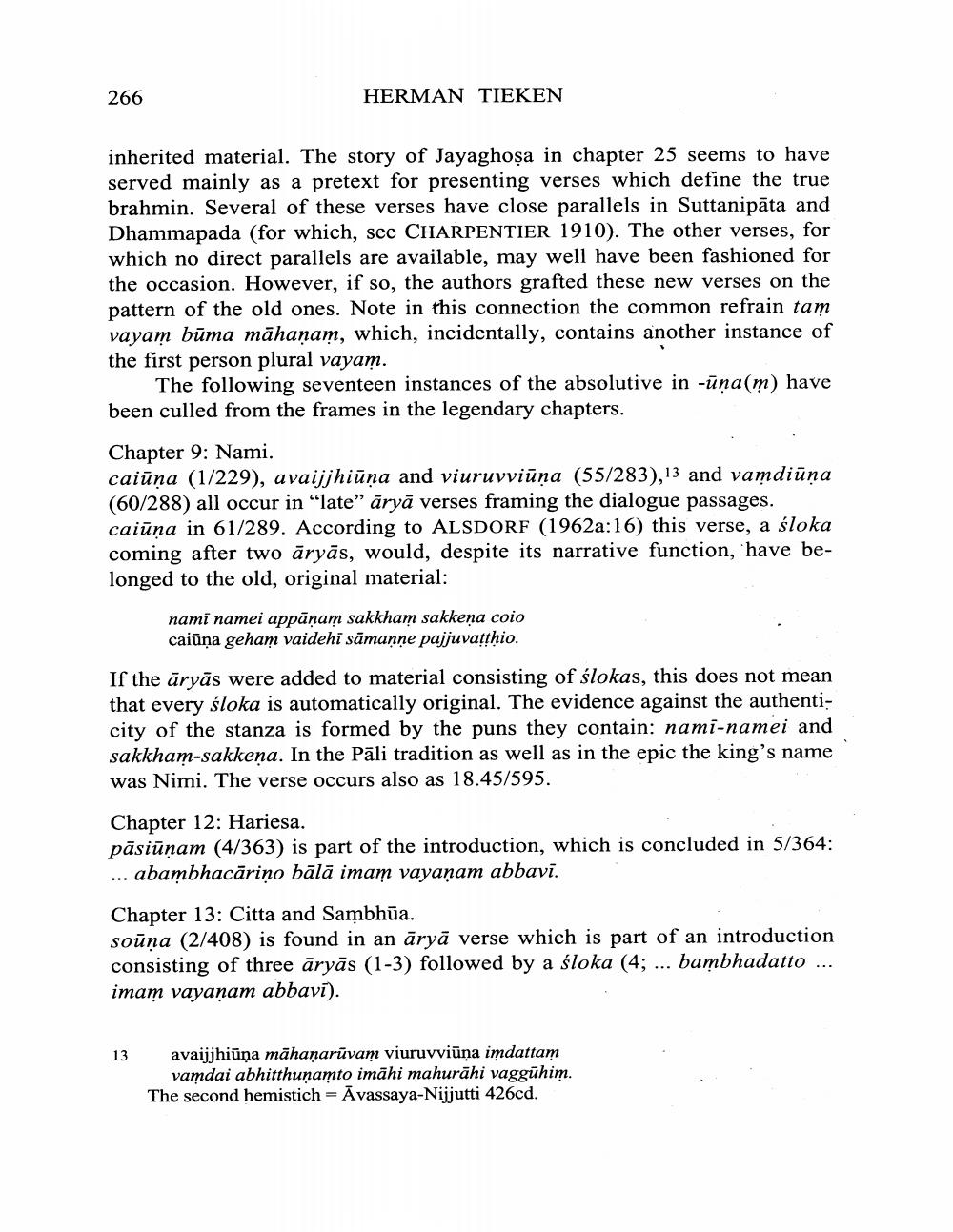________________
266
HERMAN TIEKEN
inherited material. The story of Jayaghosa in chapter 25 seems to have served mainly as a pretext for presenting verses which define the true brahmin. Several of these verses have close parallels in Suttanipāta and Dhammapada (for which, see CHARPENTIER 1910). The other verses, for which no direct parallels are available, may well have been fashioned for the occasion. However, if so, the authors grafted these new verses on the pattern of the old ones. Note in this connection the common refrain tam vayam būma māhanam, which, incidentally, contains another instance of the first person plural vayam.
The following seventeen instances of the absolutive in -ūna(m) have been culled from the frames in the legendary chapters.
Chapter 9: Nami. caiūņa (1/229), avaijjhiūņa and viuruvviūņa (55/283), 13 and vamdiūna (60/288) all occur in "late” āryā verses framing the dialogue passages. caiūņa in 61/289. According to ALSDORF (1962a:16) this verse, a śloka coming after two āryās, would, despite its narrative function, have belonged to the old, original material:
nami namei appāņam sakkham sakkeņa coio caiūņa geham vaidehi samanne pajjuvatthio.
If the āryās were added to material consisting of ślokas, this does not mean that every śloka is automatically original. The evidence against the authenticity of the stanza is formed by the puns they contain: nami-namei and sakkham-sakkeņa. In the Pāli tradition as well as in the epic the king's name was Nimi. The verse occurs also as 18.45/595.
Chapter 12: Hariesa. pāsiūņam (4/363) is part of the introduction, which is concluded in 5/364: ... abambhacārino bālā imam vayanam abbavi. Chapter 13: Citta and Sambhūa. soūņa (2/408) is found in an āryā verse which is part of an introduction consisting of three āryās (1-3) followed by a śloka (4; ... bambhadatto ... imam vayanam abbavī).
13
avaijjhiūņa māhanarūvam viuruvviūna imdattam
vamdai abhitthunamto imāhi mahurāhi vaggūhim. The second hemistich = Āvassaya-Nijjutti 426cd.




